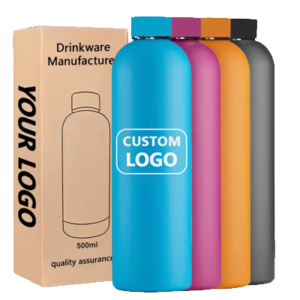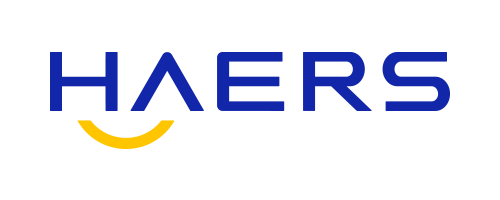What Does Haers Handle OEM Custom Bulk Bottles?
At Haers, OEM isn’t just about custom bulk nottles—it’s about bringing your brand’s vision to life, from initial concept all the way to final delivery.
For large-volume OEM orders, customization goes far beyond the product itself. Everything from the design and tooling to packaging is tailored to reflect your brand identity, meet your functional requirements, and deliver a polished, high-quality user experience. Whether you come to us with a fully developed concept or just a rough idea, we adapt our process to fit your needs.
Some clients provide detailed specs and packaging designs; others rely on our in-house design team to assist with design and engineering. This flexibility is at the heart of true OEM service—we’re here to either precisely execute your plan or help shape one with you.
So how does this process actually unfold in practice? And what role do we, as the stainless water bottle manufacturer, play along the way? Let’s walk through each step.
Table of Contents
Toggle1. Understanding the Requirements
Once an OEM project kicks off, our team starts by clarifying the customer’s packaging expectations—this sets the foundation for everything that follows.
If the client already has a mature brand system and standardized packaging specifications, they typically provide detailed design files—including structural dimensions, material specs, print artwork, and finishing instructions—sometimes even physical samples. In this case, our role is to evaluate the technical feasibility:
We review whether the structure is compatible with our production lines, if the materials can be sourced efficiently at scale, and whether the requested finishes fall within our manufacturing capabilities. If we spot any issues, we give prompt feedback and work closely with the client to make the necessary adjustments to ensure smooth production.

If the client only has a general idea and no ready-made design files, the focus shifts to translating their needs into workable solutions. This usually involves deeper collaboration with the client’s marketing, design, and purchasing teams to explore both explicit and hidden requirements. We typically look at three key aspects:
Brand Identity: We work to understand the client’s visual guidelines (such as logo usage, primary colors, and style preferences), along with the packaging aesthetics favored in their target market.
Product Details: We gather precise measurements of the cup or bottle, note any special shapes or features, list all accessories (like lids, strainers, etc.), and assess any packaging needs for additional items (like user manuals, warranty cards, or gifts).
Use Scenario: Depending on how the product will be used, the packaging strategy will vary. For example, gift-oriented products require a premium, ceremonial feel, while products for outdoor use need strong impact protection. We also confirm logistics factors—such as delivery distance (domestic vs. international), storage conditions, budget constraints, and regulatory needs (e.g., eco-certifications or food-contact safety standards).
All of this groundwork helps us develop a practical, on-brand packaging direction that balances form, function, and cost—laying the groundwork for the next design phase.
2. Design & Proposal
When clients don’t provide their own packaging designs, Haers takes the lead in creating a complete solution.
Structurally, we recommend box types that fit the product’s dimensions. Visually, we incorporate key brand elements—like logos, colors, and fonts—into a clean, effective layout. Material choices are carefully balanced to meet both aesthetic and budgetary needs.
The proposed solution is delivered in the form of 3D mockups and technical descriptions. We also include the design rationale behind our choices, so clients can clearly understand how form and function are aligned with their brand.
If a client already provides detailed drawings, this step is simplified into a technical alignment phase. We go through the specs together, confirm all production methods, and make sure both parties are aligned on technical expectations and quality standards before moving forward.
3. Sampling & Refinement
No matter how the design comes together—whether it’s client-provided or Haers-developed—sampling is the critical step for verifying feasibility and quality.
When the client provides drawings: We create a sample based on the design files and focus on testing production compatibility. We check color accuracy, dimensional precision (e.g., does the box fit the product snugly?), and material strength. If discrepancies arise—say, if the print colors are off or the structure isn’t sturdy—we provide feedback and suggest specific adjustments until the sample matches the design 100%.
When Haers provides the design: The sample not only tests production viability but also gives the client a tactile preview of the final product. They can feel the material texture, test how smoothly the box opens and closes, and evaluate whether the look and feel match their branding goals.
Once the initial concept is approved, we move into physical prototyping. A 1:1 sample is produced, replicating every detail of the design. During client review, attention typically focuses on three key areas:
Visual accuracy: Does the print look clean and consistent? Are all logos and design elements correctly placed and reproduced?
Tactile quality: Does the material feel as expected? Is the opening/closing experience smooth and satisfying?
Functional performance: We simulate real-world conditions, including drop tests and stacking tests, to verify protective performance.
If issues arise—such as color mismatches, structural weaknesses, or updated client preferences—we refine the design and produce a second-round sample. This iterative process continues until the sample fully meets the client’s expectations.

4. Preparing for Mass Production
Once the packaging plan is finalized, we begin preparing for large-scale production. This phase revolves around three key systems: materials, production lines, and quality control, all working together to ensure consistency and reliability.
Materials: Our procurement team sources materials strictly according to the approved sample. We work only with vetted suppliers who can provide consistent quality—matching the look, feel, and performance of the prototype—ensuring stability right from the start.

Production Lines: The production planning team coordinates the schedule between the packaging workshop and the bottle production lines. Shared timelines and synchronized operations ensure seamless integration between bottle assembly and packaging, with clear checkpoints—only bottles that pass inspection are released for packaging.
Quality Control: Our quality team collaborates with the client to establish a full-process inspection protocol. This includes checking the first production sample against the approved standard, performing random checks during production, and conducting final inspections of finished goods. This closed-loop approach ensures that mass-produced packaging consistently matches what was originally approved.
5. Packaging Execution & Quality Inspection
During mass production, packaging is executed through a combination of manual precision and mechanical efficiency.
Manual operations handle tasks that require careful judgment, like precise placement of components and fine adjustments. This ensures a perfect fit between product and packaging.

Automated machinery manages repetitive, high-precision steps such as folding, gluing, or sealing—delivering speed and consistency across large volumes.
Together, this hybrid workflow blends the flexibility of human hands with the efficiency and uniformity of machines. Every step follows standardized procedures, ensuring consistency across batches and operators.
Quality control is built into every phase of packaging. Our inspection framework covers three key dimensions:
Appearance: We check for any cosmetic defects and make sure each package looks clean, well-structured, and faithful to the design.
Functionality: We conduct drop tests, vibration simulations, and storage environment checks to confirm the packaging protects the product effectively throughout transportation and storage.
Customization Accuracy: For branded or personalized elements—like logos, patterns, packages, or unique markings—we verify every detail to ensure full alignment with the original design. No deviations are allowed.

This thorough inspection process ensures every product not only looks great, but also performs reliably under real-world conditions.
Final Words
In an OEM project, whether or not the client provides packaging drawings shapes the manufacturer’s role—from a pure executor of predefined plans to a creative partner who helps translate vague ideas into tangible solutions. At Haers, we’re equipped to flexibly support both scenarios.
Our goal is always the same: to deliver a final product that aligns with your brand standards, meets technical requirements, and is ready to impress—right out of the box.


